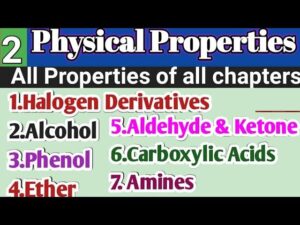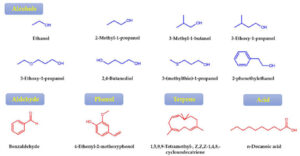Back to: MICROBIOLOGY 100 LEVEL
Welcome to class!
You’re doing an incredible job staying committed to your studies. Today’s topic is one that connects your home, hospitals, and laboratories. From the sanitizer in your school bag to the bleach in the cleaning bucket at home, you’ve already seen many of these chemicals in action. Let’s break down four major groups of chemical agents used to kill or control microbes: alcohols, halogens, phenolics, and aldehydes.
Alcohols, Halogens, Phenolics, Aldehydes
These are all types of chemical agents used for disinfection or antisepsis. They work in different ways to kill or slow down the growth of bacteria, fungi, and some viruses. Each has its strengths, weaknesses, and specific uses, and understanding them is a key part of microbiology.

Alcohols
Alcohols are among the most common antiseptics and disinfectants. You’ve probably used them without even realising—like when rubbing your hands with hand sanitiser or when a nurse cleans your arm before an injection.
Common types: Ethanol and isopropyl alcohol
Concentration: Most effective at 60–70% (not 100%)
How it works: Alcohols kill microbes by denaturing their proteins and breaking down theirmembranes.
Use: Skin antiseptic, disinfecting thermometers, wiping down small surfaces.
Fun fact: Pure alcohol isn’t as effective because water helps it penetrate the microbial cell better.
Halogens
Halogens are powerful and widely used in homes and hospitals, especially for surface cleaning and water treatment.
Common types: Chlorine and iodine
How it works: Halogens are strong oxidising agents. They attack cell proteins and essential enzymes.
Examples:
Chlorine: Found in bleach (sodium hypochlorite), used for disinfecting floors, toilets, and drinking water.
Iodine: Used as an antiseptic before surgeries and for cleaning wounds (often in the form of povidone-iodine).
Halogens are effective against a wide range of microbes, including some viruses and spores.
Phenolics
Phenolics were among the earliest disinfectants used in hospitals. Though some modern versions are safer, many are still too harsh for human skin.
How it works: They disrupt cell membranes and denature proteins.
Examples:
Phenol: The original compound used by Joseph Lister in surgery.
Chloroxylenol: Found in Dettol, commonly used in Nigerian homes.
Use: Disinfecting surfaces, floors, hospital instruments.
Phenolics are especially good at remaining active even in the presence of organic matter like blood or pus.
Aldehydes
These are among the most powerful disinfectants and can even sterilise. However, they can be toxic and must be used carefully.
Common types: Formaldehyde and glutaraldehyde
How it works: They kill microbes by cross-linking their proteins and nucleic acids, which blocks their normal functions.

Use: Sterilising medical equipment, preserving biological samples.
Because of their strong effect and potential harm to humans, aldehydes are usually used in controlled environments like laboratories.
Summary
- Alcohols (like ethanol) are used as antiseptics and surface disinfectants. They work best at 60–70%.
- Halogens (like chlorine and iodine) are effective oxidisers used in water, surface, and skin disinfection.
- Phenolics are surface disinfectants that remain active in the presence of organic matter. Dettol is a popular example.
- Aldehydes (like formaldehyde) are strong disinfectants used for sterilising instruments but must be handled with care.
Evaluation
- Why is 70% alcohol more effective than 100% alcohol as a disinfectant?
- Give one example each of a halogen and a phenolic compound.
- What is a major drawback of aldehydes in disinfection?
By learning these concepts, you’re not just preparing for exams—you’re building knowledge that protects lives. Keep going strong and trust in your ability to master this subject. Afrilearn is proud to be your learning partner. See you in the next lesson—you’re doing amazing!
